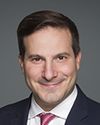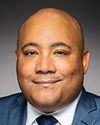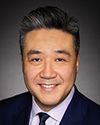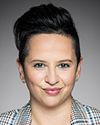Thank you very much, Madam Chair.
I believe that the electoral boundaries commission is about to make a major mistake that will have a devastating impact on certain Toronto neighbourhoods for years to come—including Flemingdon Park, where I was raised—reducing support to newcomers and upending stable historic communities that have existed for 100 years plus.
Last year, the electoral boundaries commission for Ontario released its recommendations, which included an expansion of Don Valley East, and the public had an opportunity to review and comment on those changes.
On February 10, the commission reversed course and recommended the elimination of Don Valley East without any public input. This came as a complete shock. My community was angry.
This is not the first time Don Valley East has been negatively impacted by electoral redistribution. A decade ago, the riding was cut in half when they created Don Valley North, and now it's being divided into three.
There are communities I represent that have been in three ridings, pending this proposal, within a decade. My submission, which each of you have, includes four objections: the lack of public notice and due process; the impact on newcomers, racialized and Muslim residents; the historical significance of the villages of North York; and a complete disregard for Victoria Park Avenue as a historical political dividing line between North York and Scarborough.
Because of time constraints, I will address two of the four main points.
First, the significance of the Victoria Park line was supported by 24 MPs, as outlined in a co-authored letter and supported by members adjacent to this historical border.
Second is the lack of due process. I must remind members of this committee that this report by the commission was never shared or consulted upon. No one had the opportunity to weigh in on these changes, and the original proposal recommended expanding Don Valley East, not eliminating it. This is unacceptable. We have a responsibility to do what's right as MPs, and you as a committee have a responsibility to never allow this to happen again.
I have also made four recommendations, which I hope the committee will endorse. My brief includes reference to court decisions that directly relate to the matters at hand. I trust all of you on the committee will have the opportunity to review these points.
I have also tabled answers to the six questions the committee asked to address. I have submitted a letter from the City of Toronto, signed by 23 councillors, and a letter from our MPP, the school board trustee, local organizations and two community mosques, a copy of every email my office has received on this issue—more than 500—and a petition signed by 952 people organized by a local group of concerned citizens. The group has also coordinated the placement of 1,000 lawn signs in the riding and has had three community consultations.
I implore you to do the right thing and recommend that this matter be sent back for public input to address the flaw in the legislation that has brought us to this point.
I want to say thank you to the city councillor from Willowdale, who is joining us here today.
I look forward to your questions.
Thank you, Madam Chair.










